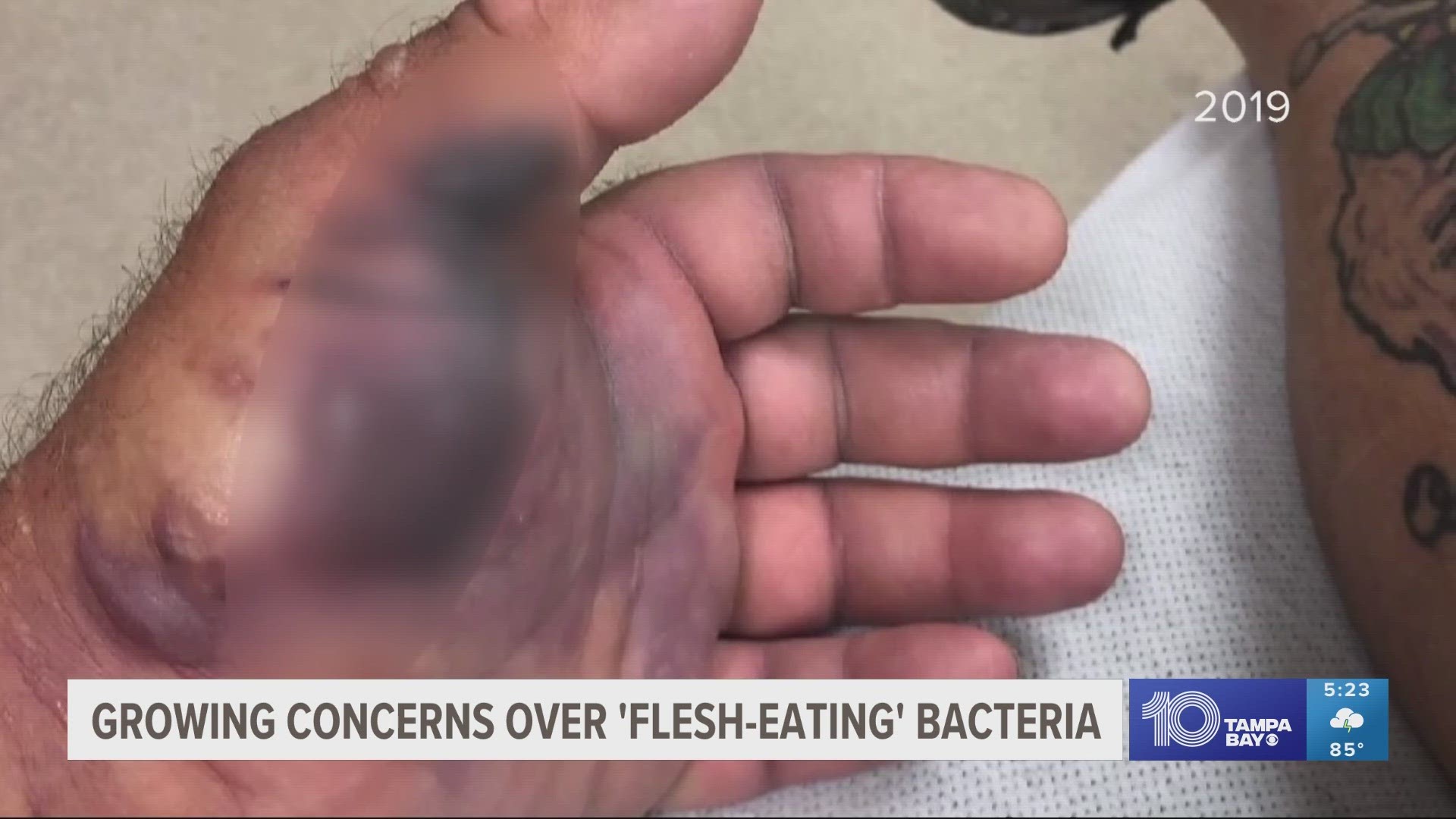TAMPA, Florida — Concerns remain after the Florida Department of Health reported more than two dozen cases of the flesh-eating bacteria, Vibrio vulnificus.
This has led to the deaths of five people in the state, all of them right here in the Tampa Bay area. Some of the cases were related to infections through open wounds, water ingestion, or in connection to raw seafood like oysters. The situation has caused some families to change their vacation menu picks.
"We wanted to come on a vacation and not be worried about all this," said Firuzi Desai who is visiting from Allentown, PA.
The health department said there were two deaths in Hillsborough County, and one each in Polk, Pasco, and Sarasota.
According to the Centers for Disease Control and Prevention, Vibrio vulnificus infections lead to necrotizing fasciitis which is a severe infection that creates a growing open wound that refuses to heal as flesh dies. This can lead to amputations and deaths in extreme cases. The CDC says there are around 100 cases of Vibrio in the United States annually with only a third of them turning fatal.
"We were discussing that while we were on the beach and my daughter was very concerned about eating seafood and she kept stopping me and my husband from eating mussels," Desai said.
Local experts recommend avoiding such raw seafood in the interim while the bacteria is actively present.
"It colonizes oysters and it also lives in the water in the sediments of estuaries and bays," Dr. Valerie Jody Harwood said.
Dr. Harwood is a professor of Integrative Biology at the University of South Florida.
According to Harwood, the bacteria doesn't come from sewage or pollution but occurs naturally in the environment and the warmer waters get the more it grows and spreads.
"It loves warm water and it loves brackish, so a kind of a mix of salt and freshwater as you might find in Tampa Bay," she said.
There are also concerns about three deaths in the Northeast area of the country where water temperatures don't support high levels of the bacteria.
"What used to happen is sometimes people travel from the Northeast to the Gulf states or the other states, consume oysters, and then go back and get sick. But at least two of these deaths were from people who were swimming in the waters in the Northeast," Harwood said.
Aside from an uptick last year after Hurricane Ian that saw 74 cases and 17 deaths, state health department officials said cases of Vibrio are not new to Florida or abnormal.
"This is very much part of being a Floridian, the same way red tide, blue-green algae, and seaweed and alligators and rattlesnakes are. This is something we deal with every single year," Jae Williams, a press officer with the Florida Department of Health, said.
Some locals are of the same thought process and going about their normal water activity plans.
"I don't think too much about it. Quite frankly, I try not to sweat the small stuff. I was in the water yesterday over at Siesta Key. I'll go in tomorrow and it doesn't keep me from doing anything that I wouldn't normally do," Brian Cully, a Sarasota resident, said.
Health officials advise if you have any open wounds or are immuno-compromised, you should avoid going into the water when it's warm.

